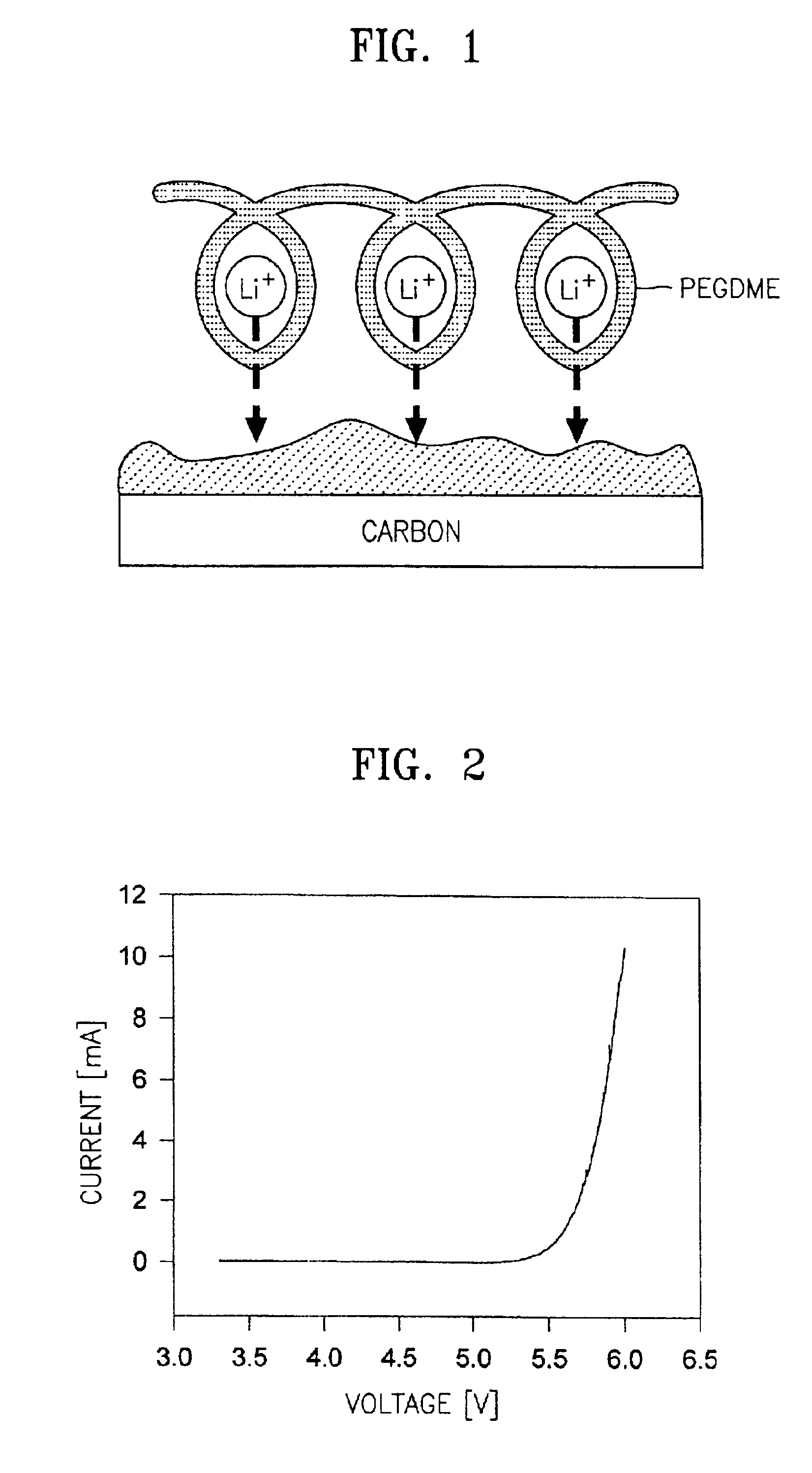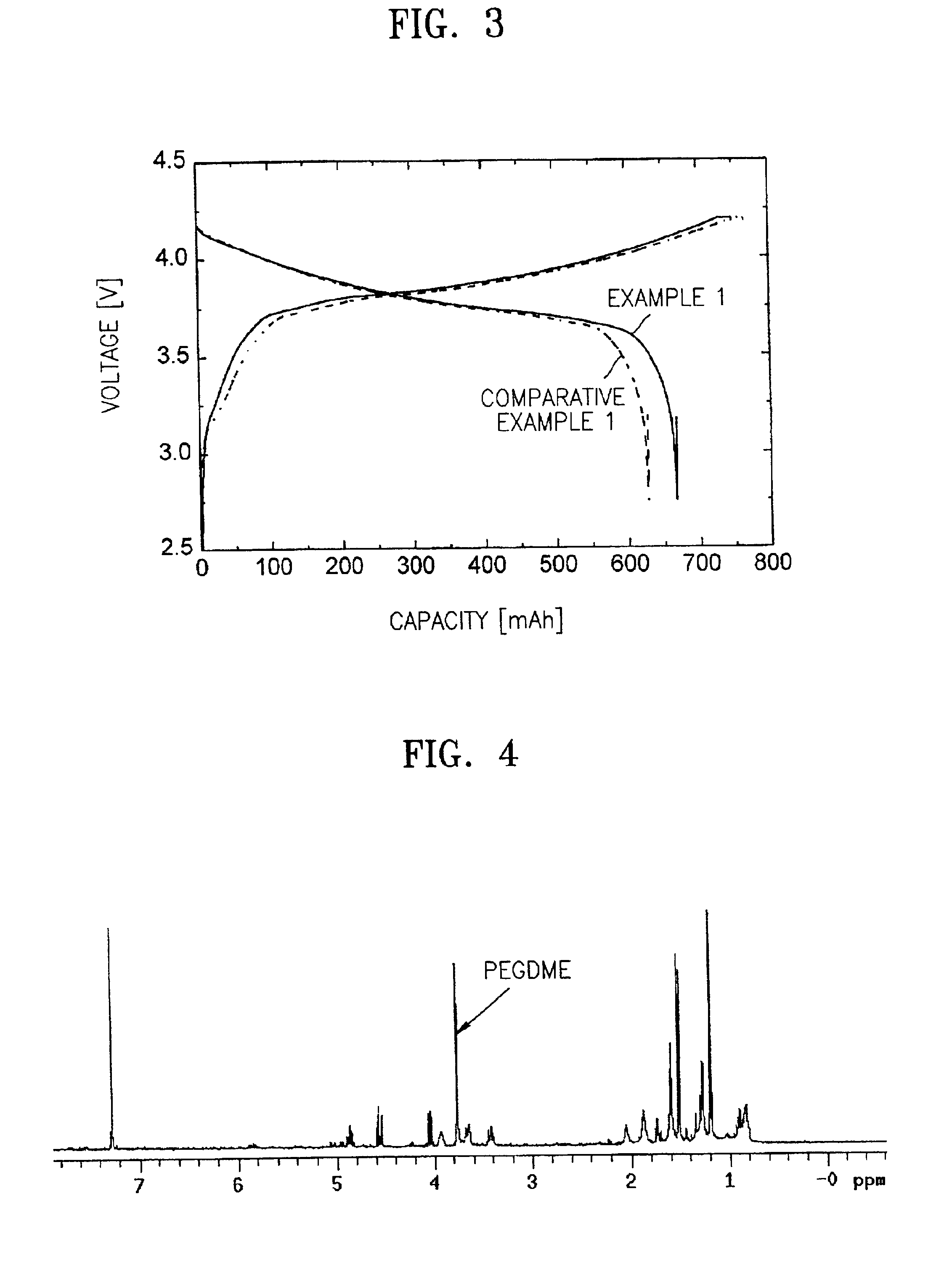Polymeric gel electrolyte and lithium battery employing the same
a polymer gel and electrolyte technology, applied in the direction of non-aqueous electrolyte cells, sustainable manufacturing/processing, secondary cell details, etc., can solve the problems of reducing the main body of such devices and equipment is becoming smaller and smaller, and the discharge capacity of lithium polymer batteries is reducing. , to achieve the effect of good mechanical properties, good ionic conductivity, and good adhesiveness to the electrod
- Summary
- Abstract
- Description
- Claims
- Application Information
AI Technical Summary
Benefits of technology
Problems solved by technology
Method used
Image
Examples
example 1
[0055]Approximately 94 g of LiCoO2, 3 g of carbon black, and 3 g of polyvinylidenefluoride were dissolved and dispersed in 80 g of N-methylpyrrolidone to prepare a cathode active material slurry. The cathode active material slurry was coated on an aluminum foil using a coating device, dried and pressed using a roll press to form a cathode.
[0056]About 90 g of mesocarbonmicrobead (MCMB), 10 g of polyvinylidenefluoride were dissolved and dispersed in 80 g of N-methylpyrrolidone to prepare an anode active material slurry. The anode active material slurry was coated on a copper foil using a coating device, dried and pressed using a roll press to prepare an anode.
[0057]Separately, 10 g of a vinylidenefluoride-hexafluoropropylene copolymer having a weight-average molecular weight of 1,000,000 and 10 g of polyethyleneglycol dimethylether having a weight-average molecular weight of 20,000 were dissolved in 200 g of dimethyl carbonate, mixed with 90 g of an electrolytic solution obtained by d...
example 2
[0059]A polymeric electrolyte and a lithium polymer battery were prepared in the same manner as in Example 1, except for using polyethyleneglycol dimethylether having a weight-average molecular weight of 50,000 in preparing a polymeric electrolyte forming composition.
example 3
[0060]A cathode and an anode were first prepared in the same manner as in Example 1. Also, a polymeric electrolyte forming composition was prepared in the same manner as in Example 1, and was then coated on a polyethylene sheet and dried to form a polymeric electrolyte. The cathode and the anode were stacked with the polyethylene sheet / polymeric electrolyte structure interposed therebetween, and the resultant structure was wrapped to complete a lithium polymer battery.
PUM
| Property | Measurement | Unit |
|---|---|---|
| Temperature | aaaaa | aaaaa |
| Percent by mass | aaaaa | aaaaa |
| Percent by mass | aaaaa | aaaaa |
Abstract
Description
Claims
Application Information
 Login to View More
Login to View More - R&D
- Intellectual Property
- Life Sciences
- Materials
- Tech Scout
- Unparalleled Data Quality
- Higher Quality Content
- 60% Fewer Hallucinations
Browse by: Latest US Patents, China's latest patents, Technical Efficacy Thesaurus, Application Domain, Technology Topic, Popular Technical Reports.
© 2025 PatSnap. All rights reserved.Legal|Privacy policy|Modern Slavery Act Transparency Statement|Sitemap|About US| Contact US: help@patsnap.com



